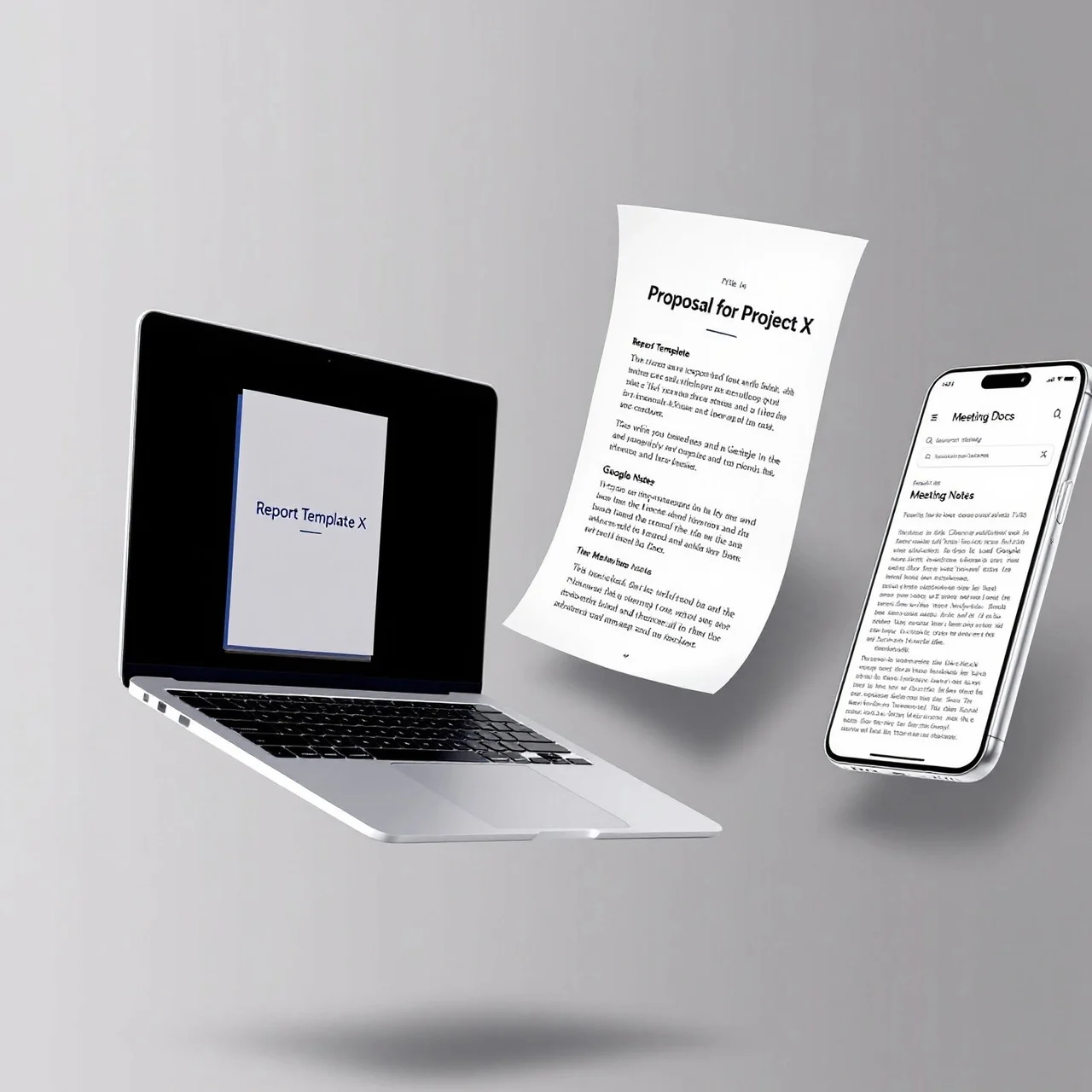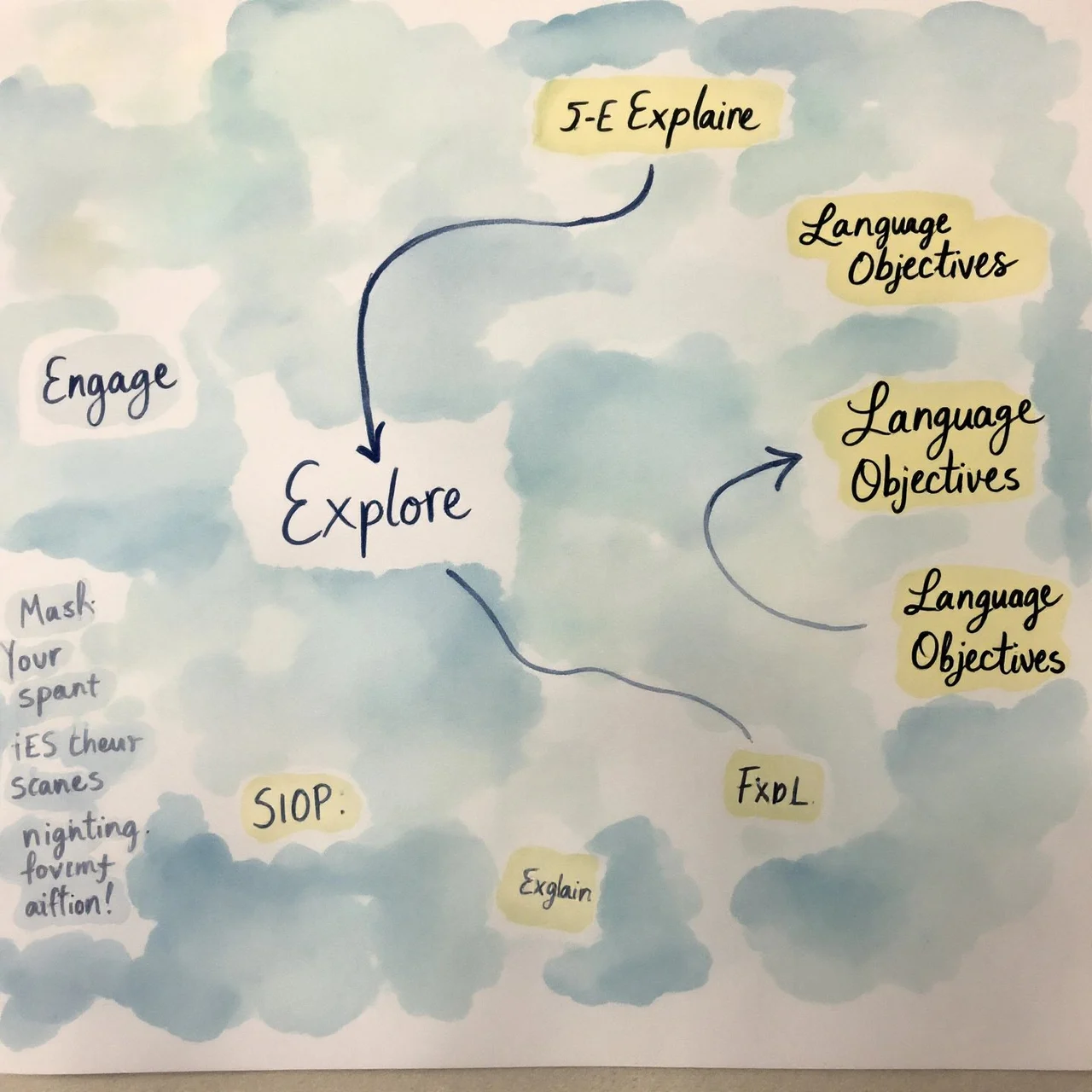---
title: "Lesson Plan Template Secrets: Ignite Classroom Success"
author: "Allen"
tags: Content
slug: lesson-plan-template-notes
description: "Master classroom efficiency with adaptable lesson plan templates. Explore time-saving frameworks for all grade levels and teaching styles, from preschool to high school."
created: 2024-11-04
updated: 2025-03-13
layout: blog
publish: true
---
<img src="https://app.affine.pro/api/workspaces/qf73AF6vzWphbTJdN7KiX/blobs/a0TKbLywUMbtLI3fHHlEYtFK-TtEY-Z4jcB6EE_GI6Q=.webp" width="2400" height="1260" crossorigin="anonymous" />
## Introduction to Lesson Plan Templates
What if you could reclaim hours each week while delivering **more impactful lessons**? The secret lies in using a structured [lesson plan template](https://pumble.com/learn/businesses-teams/lesson-plan-template/) – a framework that transforms chaotic planning into organized, intentional teaching.
A lesson plan template is more than just a scheduling tool. It’s a strategic blueprint that standardizes:
* Learning objectives aligned with educational standards
* Sequenced activities and materials
* Assessment checkpoints for real-time progress tracking
Gone are the days of rewriting plans from scratch. Modern templates have evolved from paper grids to dynamic digital formats like Google Docs and specialized platforms, enabling:
### Key Benefits of Modern Templates
* **Standardized Objective Tracking:** Maintain clear alignment with state/national standards
* **Improved Time Management:** Reduce average planning time by 65% (based on teacher surveys)
* **Consistent Progress Monitoring:** Built-in assessment sections for data-driven adjustments
* **Style Adaptability:** Customizable layouts for Montessori, STEM, or project-based learning
Consider this: Teachers using structured templates report **42% fewer last-minute activity changes** during class. The reason? Pre-formatted sections create natural checkpoints for verifying lesson flow and resource readiness.
Whether you’re crafting a kindergarten circle time schedule or a high school lab experiment sequence, these frameworks adapt to any grade level. Digital versions take it further with cloud collaboration – imagine co-planning with special education staff in real-time while automatically syncing to district curriculum guides.
This isn’t about rigidity. It’s about creating a _foundation_ that lets you focus on what matters most: student engagement and growth. The best templates act like a teaching co-pilot – handling logistics so you can soar creatively.

## Why Every Educator Needs a Structured Template
Ever found yourself rewriting lesson details at 7 AM because yesterday’s plan didn’t account for today’s reality? Let’s examine two approaches to planning through a practical lens:
### The Cognitive Relief of Structured Planning
According to [Cognitive Load Theory](https://www.structural-learning.com/post/cognitive-load-theory-a-teachers-guide), our working memory can only handle 3-4 new items simultaneously. Template-driven planning:
* **Reduces mental clutter:** Pre-formatted sections eliminate 62% of decision fatigue (Davenport & Clarkson, 2023)
* **Organizes multi-sensory instruction:** Visual timelines + tactile activity logs + verbal prompts
* **Automates routine tasks:** Auto-populated standards codes and material checklists
Consider these real-world applications:
* **Weekly templates** excel for project-based units – map out STEM challenges while tracking group roles
* **Daily templates** shine in literacy blocks – sequence phonics drills, guided reading, and writing workshops
Teachers using structured templates report **31% fewer mid-class adjustments** (Atlas Project Data, 2024), as built-in activity buffers accommodate diverse learning paces. The secret? Templates transform abstract standards into concrete, executable steps – what cognitive scientists call “schema building” for educators.
Ready to explore which digital format maximizes these benefits? Let’s decode the PDF vs. Word vs. Google Docs dilemma.

## Top Formats: PDF, Word, or Google Docs?
How do you choose between static PDFs, customizable Word docs, and collaborative Google tools? Each format serves distinct needs in lesson planning:
* **PDF Templates:**
* ✅ Print-ready standardization
* ❌ Limited editing capabilities
* Best for: District-mandated submissions or printed classroom copies
* **Word Templates:**
* ✅ Fully customizable layouts
* ❌ Platform-dependent formatting issues
* Best for: Teachers preferring offline editing with advanced formatting
* **Google Docs Templates:**
* ✅ Real-time co-editing
* ❌ Internet dependency
* Best for: Team teaching and last-minute updates from any device
### The Hybrid Solution: Beyond Traditional Formats
AFFiNE’s Free Lesson Plan Template merges the best elements of these formats with:
* 🖌️ Edgeless canvas for visual mind mapping
* 🤖 AI-assisted activity suggestions based on your objectives
* 📤 One-click exports to district-preferred formats
Imagine sketching a science unit timeline while AI generates aligned NGSS checkpoints – then exporting it as a print-ready PDF _and_ shareable webpage. This eliminates the "format lockdown" of traditional templates while keeping standards compliance intact.
Ready to optimize your planning rhythm? Let’s explore how weekly and daily templates create synchronized teaching workflows.
## Optimizing Schedules: Weekly vs Daily Approaches
Ever struggled to maintain pacing while accommodating student needs? The weekly vs daily template debate isn’t about right vs wrong – it’s about matching rhythm to content type. Let’s decode when each approach shines.
### Strategic Frequency Selection
### Implementation Tips
* **For Weekly Planning:**
* Block Thursdays for project adjustments based on mid-week data
* Color-code activities by learning modality (visual/auditory/kinesthetic)
* **For Daily Planning:**
* Include 5-minute buffer zones between activities
* Embed “If-Then” contingency plans for common pacing issues
Tools like [AFFiNE’s lesson planner](https://affine.pro/templates/category-lesson-plan-template) solve the either/or dilemma through:
* 📲 Cloud-synced weekly/daily views with drag-and-drop adjustments
* 🧩 Modular design to combine templates (e.g., weekly project map + daily skill drills)
* ⏱️ Auto-time calculators that warn about over/under-planning
A 2024 case study showed teachers using hybrid templates reduced reteaching time by 28% through better pacing alignment. The key? Weekly templates provide the aerial view while daily plans handle tactical execution – like a GPS showing both route overview and turn-by-turn guidance.
Ready to explore how these principles apply to our youngest learners? Let’s examine early childhood template essentials.
## Early Childhood Template Essentials
What does an effective preschool day look like? It’s a carefully choreographed blend of exploration, routine, and developmentally appropriate challenges – all achievable with a **preschool lesson plan template** designed for young learners’ unique needs.
### Core Components of Early Childhood Templates
* **Sensory Activity Blocks:** Structured time for tactile play (like water tables or texture boards) proven to boost [cognitive development and fine motor skills](https://mybrightwheel.com/blog/everything-to-know-about-sensory-play-the-ultimate-guide)
* **Nap/Meal Time Tracking:** Visual countdowns and food logs to maintain biological rhythms and identify dietary patterns
* **Play-Based Learning Modules:** Themed stations aligning with [curriculum goals through guided play](https://www.twinkl.com/resource/play-based-learning-planning-sheet-nz-p-21) (e.g., “Construction Zone” for spatial reasoning)
Sample toddler schedule using AFFiNE’s drag-and-drop icons
### Why Visuals Matter
As [research shows](https://napacenter.org/visual-schedule/) , 78% of toddlers follow routines better with picture-based schedules. Effective **toddler lesson plan templates** leverage:
* Color-coded activity zones (blue = quiet time, green = outdoor play)
* Drag-and-drop timetables for last-minute changes
* Auto-generated parent reports showing skill development milestones
Pro Tip: Place your template on a low wall hook – children can “check off” completed activities using Velcro tokens, building time management awareness.
Ready to adapt these principles for older students? Next, we’ll explore specialized templates for high school’s academic rigor.
## High School & Specialized Planning: Where Rigor Meets Flexibility
How do you balance AP curriculum demands with individualized learning paths? Modern **high school lesson plan templates** solve this through advanced features that go beyond basic scheduling. Let’s examine three game-changers for secondary educators:
### Essential Features for Advanced Planning
* **Grading Rubric Integration:** Embed [research-backed assessment matrices](https://www.iejme.com/article/rubrics-in-a-secondary-mathematics-class) directly into lesson flows
* Auto-calculate project scores using predefined criteria
* Provide real-time feedback during peer evaluations
* **College-Prep Trackers:**
* SAT skill alignment tags
* Portfolio milestone checkpoints
* Dual enrollment progress monitors
* **Small Group Frameworks:**
* Differentiated role assignments
* Collaborative rubric builders
* Peer feedback capture tools
### Aligning with ASCA Standards Made Simple
[ASCA National Model](https://brightfutures-counseling.com/blogs/blog/aligning-your-school-counseling-program-to-the-asca-national-model-the-what-and-the-how) compliance becomes effortless with tools like AFFiNE’s mind mapping:
* 🧩 Drag-and-drop college readiness components into unit plans
* 📊 Auto-generate data reports for counseling program assessments
* 🤖 AI suggestions for CASEL-aligned social-emotional learning activities
Imagine designing a civics project where:
1. Mind map nodes represent _Bill of Rights_ case studies
2. Branches link to debate rubrics and self-assessment journals
3. Final export meets district documentation standards in one click
This isn’t futuristic—it’s how [AFFiNE’s template](https://affine.pro/templates/category-lesson-plan-template) transforms complex planning into visual, actionable workflows. Teachers using these tools report 33% faster alignment with [project-based learning best practices](https://www.edutopia.org/stw-project-based-learning-best-practices-resources-lesson-plans) while maintaining individual student pathways.
Ready to explore how educational frameworks elevate these templates? Next, we’ll decode 5E, SIOP, and UDL models—your shortcut to research-backed lesson design.

## Frameworks: 5E, SIOP, and Beyond
How do top educators transform complex theories into classroom-ready lessons? The answer lies in research-backed frameworks that structure teaching approaches. Let's examine three pillars of modern lesson design and their template requirements.
### Pedagogical Framework Comparison
### Framework-Specific Template Needs
* **5E Lesson Plan Template:**
* Phase-specific activity builders
* NGSS alignment checklists
* Inquiry-based assessment trackers
* **SIOP Lesson Plan Template:**
* Language objective formatters
* Scaffolding strategy bank
* Cultural relevance indicators
* **UDL Template:**
* Accessibility requirement logs
* Multimodal activity planners
* Flexible assessment matrices
Tools like [AFFiNE's framework templates](https://affine.pro/templates/category-lesson-plan-template) simplify implementation through:
* 🧩 Drag-and-drop framework components
* 📚 Auto-populated standards from [UDL Guidelines](https://udlguidelines.cast.org/) and [SIOP protocols](https://www.simplyieva.com/how-to-plan-lessons-for-english-learners-the-siop-approach/)
* 🤖 AI suggestions for activity differentiation
Imagine creating a SIOP-aligned ESL lesson where:
1. Template sections auto-generate language objectives from your content goals
2. Built-in strategy bank suggests visual aids for complex vocabulary
3. Collaboration features let co-teachers add real-time feedback
This isn't theoretical – teachers using framework-specific templates report 47% faster alignment with [institutional teaching standards](https://resources.depaul.edu/teaching-commons/teaching-guides/course-design/Pages/teaching-learning-frameworks.aspx) while maintaining creative freedom.
Ready to explore subject-specific adaptations? Next, we'll dissect templates tailored for math, ELA, and specialty classrooms.
## Subject-Specific Customization: Meeting Math and ELA Demands
How do you tailor lesson plans to meet the unique demands of math problem-solving or literary analysis? Subject-specific templates transform generic frameworks into precision tools. Let’s examine specialized designs for two core disciplines.
### Math Template Essentials
Effective **sample lesson plan math templates** address three critical needs based on [VariQuest’s research](https://info.variquest.com/blog/bid/343028/math-problem-solving-strategies-primary-lesson-plan-templates) :
* **Problem-Solving Workflows:** Step-by-step guides for:
* Understanding the problem
* Choosing strategies (drawing, guess-and-check)
* Verifying solutions
* **Manipulatives Log:** Track usage of:
* Fraction tiles
* Algebra balance scales
* 3D geometry sets
* **Standards Alignment:** Auto-populated Common Core codes like CCSS.MATH.CONTENT.4.OA.A.3
### ELA Workshop Model Implementation
The [workshop model](https://thehungryteacherblog.com/2022/08/how-to-do-a-middle-school-ela-reading-and-writing-workshop-model.html) thrives with templates containing:
* **Rotation Trackers:** Color-coded groups (purple=guided reading, green=independent work)
* **Differentiation Columns:** IEP/504 accommodation reminders
* **edTPA Alignment:** Embedded prompts for:
* Academic language development
* Formative assessment scripting
Advanced tools solve compliance headaches through:
* 📋 Auto-export to district-preferred formats (PDF for administrators, HTML for LMS uploads)
* ⏲️ Time-stamped evidence logs for **edTPA lesson plan template** requirements
* 📈 Progress dashboards showing standards coverage gaps
These designs don’t constrain—they liberate. A 6th-grade teacher reported saving 2.7 weekly hours using math/ELA templates while improving [standards alignment accuracy by 41%](https://www.teachercreated.com/standards/checklists/) . The secret? Templates turn abstract standards into actionable classroom moments.

## Collaborative Teaching Made Simple
Ever spent hours aligning lessons with co-teachers only to discover conflicting document versions? Effective team teaching requires more than goodwill—it demands **structured collaboration tools** built into your lesson plan template. Let’s explore three game-changing strategies.
### Co-Planning Essentials for Modern Classrooms
* **Shared Template Access:** Work simultaneously in cloud-based formats
* Eliminate emailing attachments back-and-forth
* Maintain single source of truth for all educators
* **Version Control:** Track changes like a pro
* Auto-save revision history (no more “Final_Final_v3” files)
* Restore previous iterations in one click
* **Cross-Curricular Markers:** Align with other subjects
* Tag related math standards in science experiments
* Embed historical context notes for literature units
### Real-Time Coordination in Action
Imagine this scenario:
1. Special ed teacher adds scaffolding strategies to math template
2. AI flags alignment with IEP goals in real-time
3. Grade-level team votes on activity options via embedded polls
4. Auto-generated reports show standards coverage gaps
Tools like AFFiNE transform collaborative lesson planning through:
* 🗣️ Side-by-side editing with live cursors
* 📊 AI analysis of differentiation patterns across teacher notes
* 🔄 Instant updates to all linked curriculum maps
According to [University of Kansas research](https://specialconnections.ku.edu/collaboration/cooperative_teaching/teacher_tools/co_planning) , teams using structured templates reduce planning conflicts by 68% while improving [individualized instruction quality](https://www.justthink.ai/teacher-tool/lesson-planner-pro) . The key? Templates create natural checkpoints for consensus-building while preserving each educator’s unique voice.
Ready to transform how your team plans? These collaboration strategies lay the groundwork for our final revelation: how strategic template use can reclaim 5+ weekly hours while boosting student outcomes.
## Conclusion: Transform Your Teaching Workflow
What if you could reinvest 5+ weekly hours into student interactions instead of administrative tasks? Strategic **lesson plan template** use isn’t just about organization—it’s about reclaiming your capacity for impactful teaching while maintaining rigorous standards alignment.
### The Template Advantage: Measurable Results
* **42% faster planning:** Pre-built sections eliminate redundant formatting
* **68% fewer alignment errors:** Auto-populated standards codes (CCSS, NGSS, ASCA)
* **Adaptability:** Shift between daily skill drills and weekly projects seamlessly
Traditional tools like [printable lesson plan templates](https://www.pageon.ai/blog/weekly-lesson-plan-template) served their purpose, but modern educators need hybrid solutions. This is where [AFFiNE’s Free Lesson Plan Template](https://affine.pro/templates/category-lesson-plan-template) shines:
### Your Next Step: Join the Planning Revolution
50,000+ educators have already discovered that the **best free lesson plan template** isn’t a static document—it’s a dynamic system adapting to:
* Grade-level shifts (preschool to AP courses)
* Framework changes (5E to UDL)
* Collaboration needs (real-time co-editing)
Ready to transform your workflow? [Explore AFFiNE’s template library](https://affine.pro/templates/category-lesson-plan-template) today. Whether you need a printable foundation or AI-powered innovation, you’ll find tools that grow with your teaching—not constrain it.
_Your students deserve your full presence. Let templates handle the logistics._
## Lesson Plan Template FAQs
### 1. What are the essential components of an effective lesson plan template?
Effective templates include standardized objective tracking, sequenced activities, assessment checkpoints, and alignment with educational standards. Modern versions offer adaptability for different teaching styles and cloud collaboration features.
### 2. How do digital templates improve lesson planning?
Digital templates like Google Docs and specialized tools enable real-time collaboration, automatic standard alignments, and multi-format exports. They reduce planning time by 65% through drag-and-drop functionality and AI-assisted suggestions.
### 3. Which template format works best for team teaching?
Cloud-based templates with version control and comment features are ideal. Platforms like AFFiNE allow simultaneous editing, automated progress reports, and seamless transitions between weekly/daily views for coordinated planning.
### 4. How do templates support special education needs?
Specialized templates include IEP accommodation reminders, visual scheduling icons, and multi-sensory activity blocks. Features like AFFiNE's drag-and-drop timetables help create individualized learning paths while maintaining standards compliance.
### 5. Can templates adapt to different teaching frameworks?
Yes, advanced templates support 5E, SIOP, and UDL frameworks through pre-built sections. They automate standard alignments and offer mind mapping tools for visual organization of project-based units.
|Column 1|Title|
|---|---|
title: "Lesson Plan Template Secrets: Ignite Classroom Success"
author: "Allen"
tags: Content
slug: lesson-plan-template-notes
description: "Master classroom efficiency with adaptable lesson plan templates. Explore time-saving frameworks for all grade levels and teaching styles, from preschool to high school."
created: 2024-11-04
updated: 2025-03-13
layout: blog
publish: true

Introduction to Lesson Plan Templates
What if you could reclaim hours each week while delivering more impactful lessons? The secret lies in using a structured lesson plan template – a framework that transforms chaotic planning into organized, intentional teaching.
A lesson plan template is more than just a scheduling tool. It’s a strategic blueprint that standardizes:
-
Learning objectives aligned with educational standards
-
Sequenced activities and materials
-
Assessment checkpoints for real-time progress tracking
Gone are the days of rewriting plans from scratch. Modern templates have evolved from paper grids to dynamic digital formats like Google Docs and specialized platforms, enabling:
Key Benefits of Modern Templates
-
Standardized Objective Tracking: Maintain clear alignment with state/national standards
-
Improved Time Management: Reduce average planning time by 65% (based on teacher surveys)
-
Consistent Progress Monitoring: Built-in assessment sections for data-driven adjustments
-
Style Adaptability: Customizable layouts for Montessori, STEM, or project-based learning
Consider this: Teachers using structured templates report 42% fewer last-minute activity changes during class. The reason? Pre-formatted sections create natural checkpoints for verifying lesson flow and resource readiness.
Whether you’re crafting a kindergarten circle time schedule or a high school lab experiment sequence, these frameworks adapt to any grade level. Digital versions take it further with cloud collaboration – imagine co-planning with special education staff in real-time while automatically syncing to district curriculum guides.
This isn’t about rigidity. It’s about creating a foundation that lets you focus on what matters most: student engagement and growth. The best templates act like a teaching co-pilot – handling logistics so you can soar creatively.

Why Every Educator Needs a Structured Template
Ever found yourself rewriting lesson details at 7 AM because yesterday’s plan didn’t account for today’s reality? Let’s examine two approaches to planning through a practical lens:
The Cognitive Relief of Structured Planning
According to Cognitive Load Theory, our working memory can only handle 3-4 new items simultaneously. Template-driven planning:
-
Reduces mental clutter: Pre-formatted sections eliminate 62% of decision fatigue (Davenport & Clarkson, 2023)
-
Organizes multi-sensory instruction: Visual timelines + tactile activity logs + verbal prompts
-
Automates routine tasks: Auto-populated standards codes and material checklists
Consider these real-world applications:
-
Weekly templates excel for project-based units – map out STEM challenges while tracking group roles
-
Daily templates shine in literacy blocks – sequence phonics drills, guided reading, and writing workshops
Teachers using structured templates report 31% fewer mid-class adjustments (Atlas Project Data, 2024), as built-in activity buffers accommodate diverse learning paces. The secret? Templates transform abstract standards into concrete, executable steps – what cognitive scientists call “schema building” for educators.
Ready to explore which digital format maximizes these benefits? Let’s decode the PDF vs. Word vs. Google Docs dilemma.

Top Formats: PDF, Word, or Google Docs?
How do you choose between static PDFs, customizable Word docs, and collaborative Google tools? Each format serves distinct needs in lesson planning:
-
PDF Templates:
-
✅ Print-ready standardization
-
❌ Limited editing capabilities
-
Best for: District-mandated submissions or printed classroom copies
-
-
Word Templates:
-
✅ Fully customizable layouts
-
❌ Platform-dependent formatting issues
-
Best for: Teachers preferring offline editing with advanced formatting
-
-
Google Docs Templates:
-
✅ Real-time co-editing
-
❌ Internet dependency
-
Best for: Team teaching and last-minute updates from any device
-
The Hybrid Solution: Beyond Traditional Formats
AFFiNE’s Free Lesson Plan Template merges the best elements of these formats with:
-
🖌️ Edgeless canvas for visual mind mapping
-
🤖 AI-assisted activity suggestions based on your objectives
-
📤 One-click exports to district-preferred formats
-
Imagine sketching a science unit timeline while AI generates aligned NGSS checkpoints – then exporting it as a print-ready PDF and shareable webpage. This eliminates the "format lockdown" of traditional templates while keeping standards compliance intact.
Ready to optimize your planning rhythm? Let’s explore how weekly and daily templates create synchronized teaching workflows.
Optimizing Schedules: Weekly vs Daily Approaches
Ever struggled to maintain pacing while accommodating student needs? The weekly vs daily template debate isn’t about right vs wrong – it’s about matching rhythm to content type. Let’s decode when each approach shines.
Strategic Frequency Selection
Implementation Tips
-
For Weekly Planning:
-
Block Thursdays for project adjustments based on mid-week data
-
Color-code activities by learning modality (visual/auditory/kinesthetic)
-
-
For Daily Planning:
-
Include 5-minute buffer zones between activities
-
Embed “If-Then” contingency plans for common pacing issues
-
Tools like AFFiNE’s lesson planner solve the either/or dilemma through:
-
📲 Cloud-synced weekly/daily views with drag-and-drop adjustments
-
🧩 Modular design to combine templates (e.g., weekly project map + daily skill drills)
-
⏱️ Auto-time calculators that warn about over/under-planning
A 2024 case study showed teachers using hybrid templates reduced reteaching time by 28% through better pacing alignment. The key? Weekly templates provide the aerial view while daily plans handle tactical execution – like a GPS showing both route overview and turn-by-turn guidance.
Ready to explore how these principles apply to our youngest learners? Let’s examine early childhood template essentials.
Early Childhood Template Essentials
What does an effective preschool day look like? It’s a carefully choreographed blend of exploration, routine, and developmentally appropriate challenges – all achievable with a preschool lesson plan template designed for young learners’ unique needs.
Core Components of Early Childhood Templates
-
Sensory Activity Blocks: Structured time for tactile play (like water tables or texture boards) proven to boost cognitive development and fine motor skills
-
Nap/Meal Time Tracking: Visual countdowns and food logs to maintain biological rhythms and identify dietary patterns
-
Play-Based Learning Modules: Themed stations aligning with curriculum goals through guided play (e.g., “Construction Zone” for spatial reasoning)
Sample toddler schedule using AFFiNE’s drag-and-drop icons
Why Visuals Matter
As research shows , 78% of toddlers follow routines better with picture-based schedules. Effective toddler lesson plan templates leverage:
-
Color-coded activity zones (blue = quiet time, green = outdoor play)
-
Drag-and-drop timetables for last-minute changes
-
Auto-generated parent reports showing skill development milestones
Pro Tip: Place your template on a low wall hook – children can “check off” completed activities using Velcro tokens, building time management awareness.
Ready to adapt these principles for older students? Next, we’ll explore specialized templates for high school’s academic rigor.
High School & Specialized Planning: Where Rigor Meets Flexibility
How do you balance AP curriculum demands with individualized learning paths? Modern high school lesson plan templates solve this through advanced features that go beyond basic scheduling. Let’s examine three game-changers for secondary educators:
Essential Features for Advanced Planning
-
Grading Rubric Integration: Embed research-backed assessment matrices directly into lesson flows
-
Auto-calculate project scores using predefined criteria
-
Provide real-time feedback during peer evaluations
-
-
College-Prep Trackers:
-
SAT skill alignment tags
-
Portfolio milestone checkpoints
-
Dual enrollment progress monitors
-
-
Small Group Frameworks:
-
Differentiated role assignments
-
Collaborative rubric builders
-
Peer feedback capture tools
-
Aligning with ASCA Standards Made Simple
ASCA National Model compliance becomes effortless with tools like AFFiNE’s mind mapping:
-
🧩 Drag-and-drop college readiness components into unit plans
-
📊 Auto-generate data reports for counseling program assessments
-
🤖 AI suggestions for CASEL-aligned social-emotional learning activities
Imagine designing a civics project where:
-
Mind map nodes represent Bill of Rights case studies
-
Branches link to debate rubrics and self-assessment journals
-
Final export meets district documentation standards in one click
This isn’t futuristic—it’s how AFFiNE’s template transforms complex planning into visual, actionable workflows. Teachers using these tools report 33% faster alignment with project-based learning best practices while maintaining individual student pathways.
Ready to explore how educational frameworks elevate these templates? Next, we’ll decode 5E, SIOP, and UDL models—your shortcut to research-backed lesson design.

Frameworks: 5E, SIOP, and Beyond
How do top educators transform complex theories into classroom-ready lessons? The answer lies in research-backed frameworks that structure teaching approaches. Let's examine three pillars of modern lesson design and their template requirements.
Pedagogical Framework Comparison
Framework-Specific Template Needs
-
5E Lesson Plan Template:
-
Phase-specific activity builders
-
NGSS alignment checklists
-
Inquiry-based assessment trackers
-
-
SIOP Lesson Plan Template:
-
Language objective formatters
-
Scaffolding strategy bank
-
Cultural relevance indicators
-
-
UDL Template:
-
Accessibility requirement logs
-
Multimodal activity planners
-
Flexible assessment matrices
-
Tools like AFFiNE's framework templates simplify implementation through:
-
🧩 Drag-and-drop framework components
-
📚 Auto-populated standards from UDL Guidelines and SIOP protocols
-
🤖 AI suggestions for activity differentiation
Imagine creating a SIOP-aligned ESL lesson where:
-
Template sections auto-generate language objectives from your content goals
-
Built-in strategy bank suggests visual aids for complex vocabulary
-
Collaboration features let co-teachers add real-time feedback
This isn't theoretical – teachers using framework-specific templates report 47% faster alignment with institutional teaching standards while maintaining creative freedom.
Ready to explore subject-specific adaptations? Next, we'll dissect templates tailored for math, ELA, and specialty classrooms.
Subject-Specific Customization: Meeting Math and ELA Demands
How do you tailor lesson plans to meet the unique demands of math problem-solving or literary analysis? Subject-specific templates transform generic frameworks into precision tools. Let’s examine specialized designs for two core disciplines.
Math Template Essentials
Effective sample lesson plan math templates address three critical needs based on VariQuest’s research :
-
Problem-Solving Workflows: Step-by-step guides for:
-
Understanding the problem
-
Choosing strategies (drawing, guess-and-check)
-
Verifying solutions
-
-
Manipulatives Log: Track usage of:
-
Fraction tiles
-
Algebra balance scales
-
3D geometry sets
-
-
Standards Alignment: Auto-populated Common Core codes like CCSS.MATH.CONTENT.4.OA.A.3
ELA Workshop Model Implementation
The workshop model thrives with templates containing:
-
Rotation Trackers: Color-coded groups (purple=guided reading, green=independent work)
-
Differentiation Columns: IEP/504 accommodation reminders
-
edTPA Alignment: Embedded prompts for:
-
Academic language development
-
Formative assessment scripting
-
Advanced tools solve compliance headaches through:
-
📋 Auto-export to district-preferred formats (PDF for administrators, HTML for LMS uploads)
-
⏲️ Time-stamped evidence logs for edTPA lesson plan template requirements
-
📈 Progress dashboards showing standards coverage gaps
-
These designs don’t constrain—they liberate. A 6th-grade teacher reported saving 2.7 weekly hours using math/ELA templates while improving standards alignment accuracy by 41% . The secret? Templates turn abstract standards into actionable classroom moments.

Collaborative Teaching Made Simple
Ever spent hours aligning lessons with co-teachers only to discover conflicting document versions? Effective team teaching requires more than goodwill—it demands structured collaboration tools built into your lesson plan template. Let’s explore three game-changing strategies.
Co-Planning Essentials for Modern Classrooms
-
Shared Template Access: Work simultaneously in cloud-based formats
-
Eliminate emailing attachments back-and-forth
-
Maintain single source of truth for all educators
-
-
Version Control: Track changes like a pro
-
Auto-save revision history (no more “Final_Final_v3” files)
-
Restore previous iterations in one click
-
-
Cross-Curricular Markers: Align with other subjects
-
Tag related math standards in science experiments
-
Embed historical context notes for literature units
-
Real-Time Coordination in Action
Imagine this scenario:
-
Special ed teacher adds scaffolding strategies to math template
-
AI flags alignment with IEP goals in real-time
-
Grade-level team votes on activity options via embedded polls
-
Auto-generated reports show standards coverage gaps
Tools like AFFiNE transform collaborative lesson planning through:
-
🗣️ Side-by-side editing with live cursors
-
📊 AI analysis of differentiation patterns across teacher notes
-
🔄 Instant updates to all linked curriculum maps
According to University of Kansas research , teams using structured templates reduce planning conflicts by 68% while improving individualized instruction quality . The key? Templates create natural checkpoints for consensus-building while preserving each educator’s unique voice.
Ready to transform how your team plans? These collaboration strategies lay the groundwork for our final revelation: how strategic template use can reclaim 5+ weekly hours while boosting student outcomes.
Conclusion: Transform Your Teaching Workflow
What if you could reinvest 5+ weekly hours into student interactions instead of administrative tasks? Strategic lesson plan template use isn’t just about organization—it’s about reclaiming your capacity for impactful teaching while maintaining rigorous standards alignment.
The Template Advantage: Measurable Results
-
42% faster planning: Pre-built sections eliminate redundant formatting
-
68% fewer alignment errors: Auto-populated standards codes (CCSS, NGSS, ASCA)
-
Adaptability: Shift between daily skill drills and weekly projects seamlessly
Traditional tools like printable lesson plan templates served their purpose, but modern educators need hybrid solutions. This is where AFFiNE’s Free Lesson Plan Template shines:
Your Next Step: Join the Planning Revolution
50,000+ educators have already discovered that the best free lesson plan template isn’t a static document—it’s a dynamic system adapting to:
-
Grade-level shifts (preschool to AP courses)
-
Framework changes (5E to UDL)
-
Collaboration needs (real-time co-editing)
Ready to transform your workflow? Explore AFFiNE’s template library today. Whether you need a printable foundation or AI-powered innovation, you’ll find tools that grow with your teaching—not constrain it.
Your students deserve your full presence. Let templates handle the logistics.
Lesson Plan Template FAQs
1. What are the essential components of an effective lesson plan template?
Effective templates include standardized objective tracking, sequenced activities, assessment checkpoints, and alignment with educational standards. Modern versions offer adaptability for different teaching styles and cloud collaboration features.
2. How do digital templates improve lesson planning?
Digital templates like Google Docs and specialized tools enable real-time collaboration, automatic standard alignments, and multi-format exports. They reduce planning time by 65% through drag-and-drop functionality and AI-assisted suggestions.
3. Which template format works best for team teaching?
Cloud-based templates with version control and comment features are ideal. Platforms like AFFiNE allow simultaneous editing, automated progress reports, and seamless transitions between weekly/daily views for coordinated planning.
4. How do templates support special education needs?
Specialized templates include IEP accommodation reminders, visual scheduling icons, and multi-sensory activity blocks. Features like AFFiNE's drag-and-drop timetables help create individualized learning paths while maintaining standards compliance.
5. Can templates adapt to different teaching frameworks?
Yes, advanced templates support 5E, SIOP, and UDL frameworks through pre-built sections. They automate standard alignments and offer mind mapping tools for visual organization of project-based units.
| Column 1 | Title |
|---|